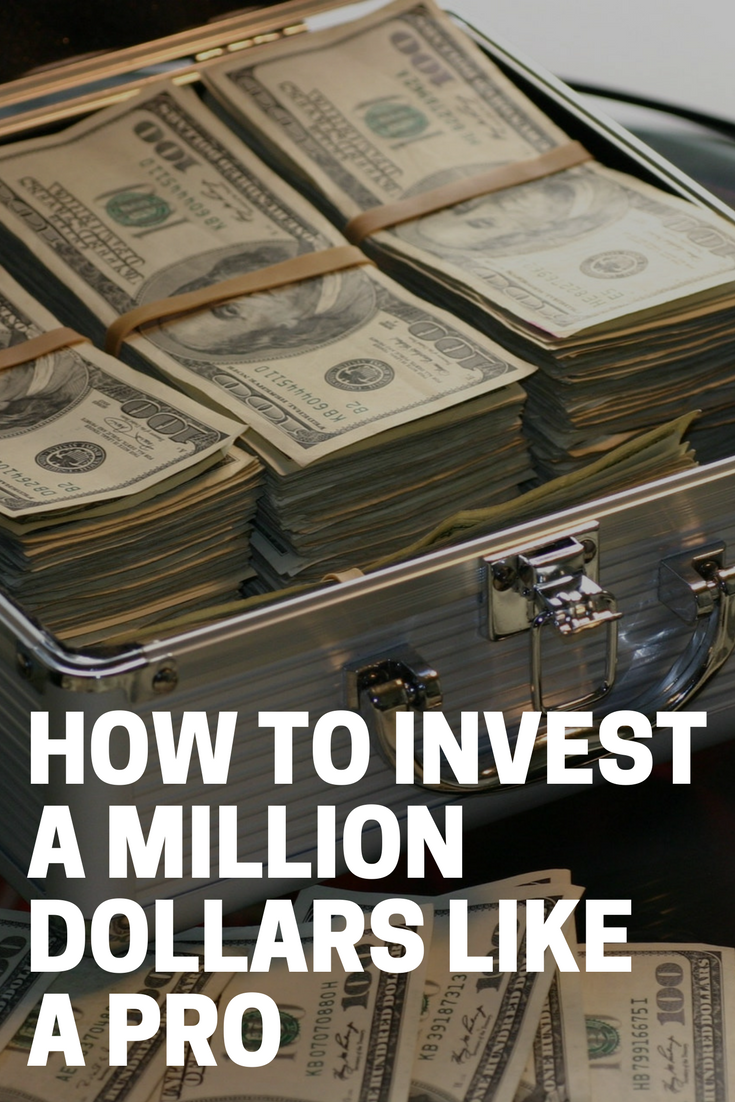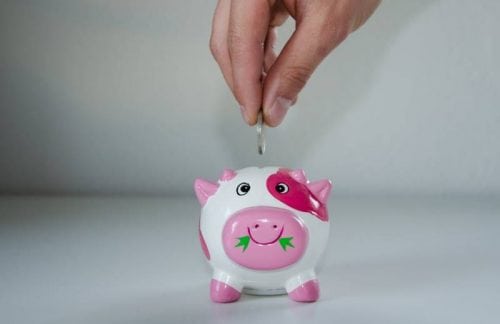
People say that we have a one in a million chance of winning a million dollars from the lottery. But what if you wake up one day and discover that you have actually won a million dollars? What will you do with the enormous amount of money? Buy a new car, or perhaps a new house? Or maybe some of the latest gadgets?
A million dollars may seem like a very large sum of money for people who had not had their hands on one before. However, just as everyone knows, we can easily spend all the money on expensive items such as laptops, smartphones, cars, houses, and the like.
We may also want to travel the world and spend the money shopping for expensive items and spending it on luxurious getaways. We may even get tempted to spend all the money all at once within a single day. The next thing you know, all the money that you have is gone.
For some people, having a million dollars is an opportunity for investment. Unlike others, instead of splurging the money on various items, they opt to place their money on investments such as properties, stocks, and the like. They refuse to spend their money on things that will just deteriorate or lose their value through time.
A lot of us can actually learn a lesson from these kind of people as we strive to manage our finances better. In the United States of America, for example, majority of Americans doubt that they have saved or invested enough to have a comfortable retirement, let alone achieve that million-dollar milestone.
A poll that was conducted by the AP-CNBC in 2011 discovered that almost a third or 31 percent of the residents of the United States of America believe that they would require a minimum of $100,000 to $500,000 worth of savings upon their retirement to have a comfortable life. 22 percent believe that the minimum savings would be million dollars to achieve that comfortable retirement that they have been hoping for.

A lot of people are still trying their best to achieve that million-dollar mark, and currently, millions of people in America have already achieved that milestone. So what if you are already one of them? Let's just say that you have won a million dollars from the lottery or someone just notified you that you had inherited a million dollars, or maybe you realized that all your hard work have already paid off and you have savings that have already amounted to a million dollars. What will you do? Will you just keep the money, spend it, put it in a bank, or invest it?
If you want to splurge on luxurious items, then by all means, go ahead, if that is what makes you happy. If you would want to invest the money to make its value grow, then we recommend that you continue reading through this article to discover ways on how to invest a million dollars like a pro.
The AP-CNBC poll discovered that six in 10 residents of the United States of America say that their confidence in investing has been affected by the volatility in the stock market. However, still, the respondents of the said survey say that investing is still their top priority.
The poll asked their respondents what they would do if they had a million dollars and discovered that on average, Americans would be willing to spend 31 percent of the money on investing, or saving ‘17 percent on giving to their family,' 14 percent on their expenditures,' 13 percent on paying their debt,' 12 percent on purchasing real estate,' and ‘11 percent on various donations to charity.’ Unfortunately, the reality of our world today is that our increasing expenses, lower job wages, and job cuts force a lot of people to dig into their savings to pay for bills and their debts.
Earning a million dollars is actually not as hard as it seems as everyone has the ability to become a millionaire through time. People do not need a six-digit salary or a huge inheritance in order to reach the million-dollar mark. You just need to start young and make smart financial decisions. You need commitment, consistency, and good financial habits in order to achieve your goal.

If you want to achieve financial security, you have to keep at least three rules in your mind.
- The first one is that you must live within your means. You should not spend money that you do not have, or else you would one day discover that you are already deep down in debt.
- The second is that you must commit to place a certain amount in your savings every month and commit to sticking to that goal.
- And lastly, you have to ensure that your investments are placed in a diversified portfolio which includes a mix of bonds, stocks, and alternative investments (real estate and commodities) and rebalance the said mix in order to achieve your goals for growth.
People usually invest their money in order to be able to keep up with inflation as your one million dollars now can only be worth around $10,000 after a few years. So what must you do once you get a million dollars?
Step 1: Do Nothing
By doing nothing, we mean that you must sit around on it first to avoid making rash decisions – this should last around three to six months. I believe that this is the best advice that I have ever received about investing as this could also be useful if you have more than one million dollars.

People usually tend to make rash decisions especially when they are struck with a windfall of unexpected money. If ever you need a place to keep the money, the first thing to consider is placing them on a group of Certificates of Deposit or in an online savings account.
Certificates of Deposits
Opting for Certificates of Deposits will place an extra barrier between you and your potential wrong decision as you will be penalized for any withdrawals from the Certificates of Deposits before it matures.
Online Savings Accounts
An Online Savings Account will give you much more flexibility, but it will also put you at risk of withdrawing all your money to go on a luxurious spending spree.
People tend to ignore this advice as they immediately think of acquiring properties and things that they do not need. They sometimes even choose to quit their jobs because they already believe that a million dollar would be enough to support them in their needs. Investing with even very small amounts, for example, a thousand dollars or even $10,000, need to be given some thought on what would help you improve your investment portfolio.
Step 2: Make a Plan
Unfortunately, when it comes to investments, hoping for the best is not considered as a good way of making your $1 million grow. You will not be able to do it without a concrete plan. You can start by making a timetable of how you will spend and invest your fortune.
Step 3: Get Some Help
Setting up a financial plan and responsible investing can be somehow overwhelming for someone who has very limited experience. However, you must remember that looking for some help from professionals is not something to be ashamed of. Even if you already feel confident in your financial plans, it will be a great help if you choose to have a financial adviser.
Step 4: Forget About Your Neighbors
If your goal is to make you $1 million grow so that you can impress your neighbors, friends, or family, then you have a difficult decision to make. A lot of people tend to impress other people by buying the latest models of cars, the newest gadgets, or posting pictures of their luxurious getaways on social media – all that can be a poison to your finances. Aggressive long-term investing and saving requires you to live well below your means.
Step 5: Pay Off Your Debt
Another thing to do is to pay off any debt that you have. But this does not mean that you would spend all your money in paying off all your debts. You can first pay off your credit card debts so that instead of paying for that $100 credit card bill that you receive every month, you can start investing the $100 instead.

You can also opt to pay out any other debts that have double-digit interest rates. Pay these debts off and be done with it. Always put in your mind that this does not give you a permission to go out on another shopping spree and acquire more debt. You have a million dollars, so why would you need credit cards in the first place?
6 Easy Steps to Set Up a Debt Repayment Plan
- Make a List of Your Debts -The first thing that you need to do is to make a list of all the debts that you have. The list should include the minimum amount of payment, interest rate, and the total amount that you owe.
The said list should include all of your debt: from your credit card debt to student loans to personal loans, including your mortgage. You should also include the money that you owe to your family and friends.
- Rank Your Debts – The next thing that you should do is to rank your debts in the order that you would want to pay them off. Experts recommend that people should go from the smallest amount to the largest amount to help keep the momentum going.
Other people recommend making a list of the debts from those with the highest to the lowest interest rate since this manner will allow you to save the most money. The order of payment that you make use is up to you. However, the important thing is that you stick to your list once you finish making it.
- Look for Extra Money to Pay Your Debts – The third thing that you should do is to decide on how much extra money you have per month to pay towards your debt. You may be required to cut back on spending in other areas so that you may have the money to place towards your debt payment plan. Even if you have a million dollars, it does not mean that you use it all up on paying for the debt. It is also advisable that you look for some extra money in order to help you pay off your debts so that you can still have enough money to invest.
Another option is to look for a part-time job or to work overtime at your present job to boost your earning power.

You can also choose to sell some items to earn some extra money for your debt payment plan. Also, you may want to use all the money that you receive from bonuses, tax returns, or gifts to your debt so that you may be able to pay it off more quickly. Learning to stick to a monthly budget will also help you in finding the extra money to use as payment for your debt.
- Focus on One Debt at a Time – You should learn to concentrate on paying off the first debt that is on your list so that you can succeed with your debt repayment plan. Place all your extra money toward the first debt, while paying the minimum amount on all the other payments needed.
When you learn to concentrate on one debt at a time, you can pay off the debt more quickly since more of the money will directly go to the principal balance and less will be spent on paying the interest. When you opt to spread your extra money over numerous debts, you are reducing the effect that it has on your debt since you are paying for more interests.
- Move to the Next Debt on Your List – Once you have already paid off the first debt that is on your list, it is time to move onto the next, while paying the remaining minimum balances of your other debts.
You must continue to do this until you are able to have crossed out all the debts that you have listed. And remember that when you first begin working on your plan, it may feel like it will take you forever to pay off the first debt on your list. However, as you work down the list of your debts and gain enough momentum, you will be surprised at how quickly you are able to pay off the next one.
- Build Up Your Savings – Once you are able to pay off all your debt, it is now the time to concentrate on building up your own savings account as this will help you prevent yourself from going back into debt. Setting up an emergency fund is one of the best means that you can use in order to take control of your own finances and resist going into debt.
Also, when it comes to making use of credit cards in the future, you must learn how to use them responsibly or even not at all. We assure you that your future self will thank you.
Step 6: Boost Up Your Emergency Fund

Since you have an enormous influx of money, keep a fund that is good for a minimum of 18 to 24 months of your lifestyle. You can refer to it as your Ultimate Emergency fund. You can place it in online banks or even opt for Certificates of Deposits.
Step 7: Put Your Money to Work
It will be an understatement to declare that this interest rate environment has been very interesting over the past couple of years. Attempting to get your hands on a high yield bond these days is about as realistic as experiencing snow in the Philippines. It will never happen! You can opt for a higher percentage of municipal bonds that are tax-free.
You can also include some sort of short to intermediate corporate bonds, mortgage-backed securities, and even some convertible bonds and bank loans as well. It would take a lot of time and research to opt for individual bonds, so we recommend that you lean towards the mutual fund side of things as there are a lot of excellent mutual bond funds that have done exceptionally well over the past several years. Also, just for purposes of diversification, you could also consider buying some bond ETF’s.

Step 8: Do Not Panic
Even if all of your money is not fully invested in the stock market, almost all long-term financial plans will have some kind of exposure to stocks. And the stock market can be a terrifying thing when the economy experiences a cyclical decline.
However, based on some observations from the past, investors who have panicked and opted to sell their stocks during the downturns of the stock market have discovered that they made the wrong decision in the long run. For example, in 2008, a lot of people panicked when the S&P 500 lost almost half of its value when the financial crisis arose. But today, after less than a decade, the S&P 500 is currently more than 76 percent higher as compared to its peak in 2007.
Overall, we can say that money makes money. Nevertheless, it can be hard to make your money grow amid these rocky financial markets. Your confidence may also have been affected by the recent volatility of the financial markets across the globe.
Warren Buffett, one of the most successful investors of all time, once said this with regards to investing: “You don’t need to be a rocket scientist. Investing is not a game where the guy with the 160 IQ beats the guy with 130 IQ.”
Investing successfully is actually really simple. You do not need to sacrifice some years of your retirement to an overpriced and underperforming fund manager. You should embrace low fees and hold your investment for the long term.
Making your money grow is a sprint, not a marathon. It takes a lot of effort, commitment, and determination so that you can be able to invest that $1 million like a pro.



